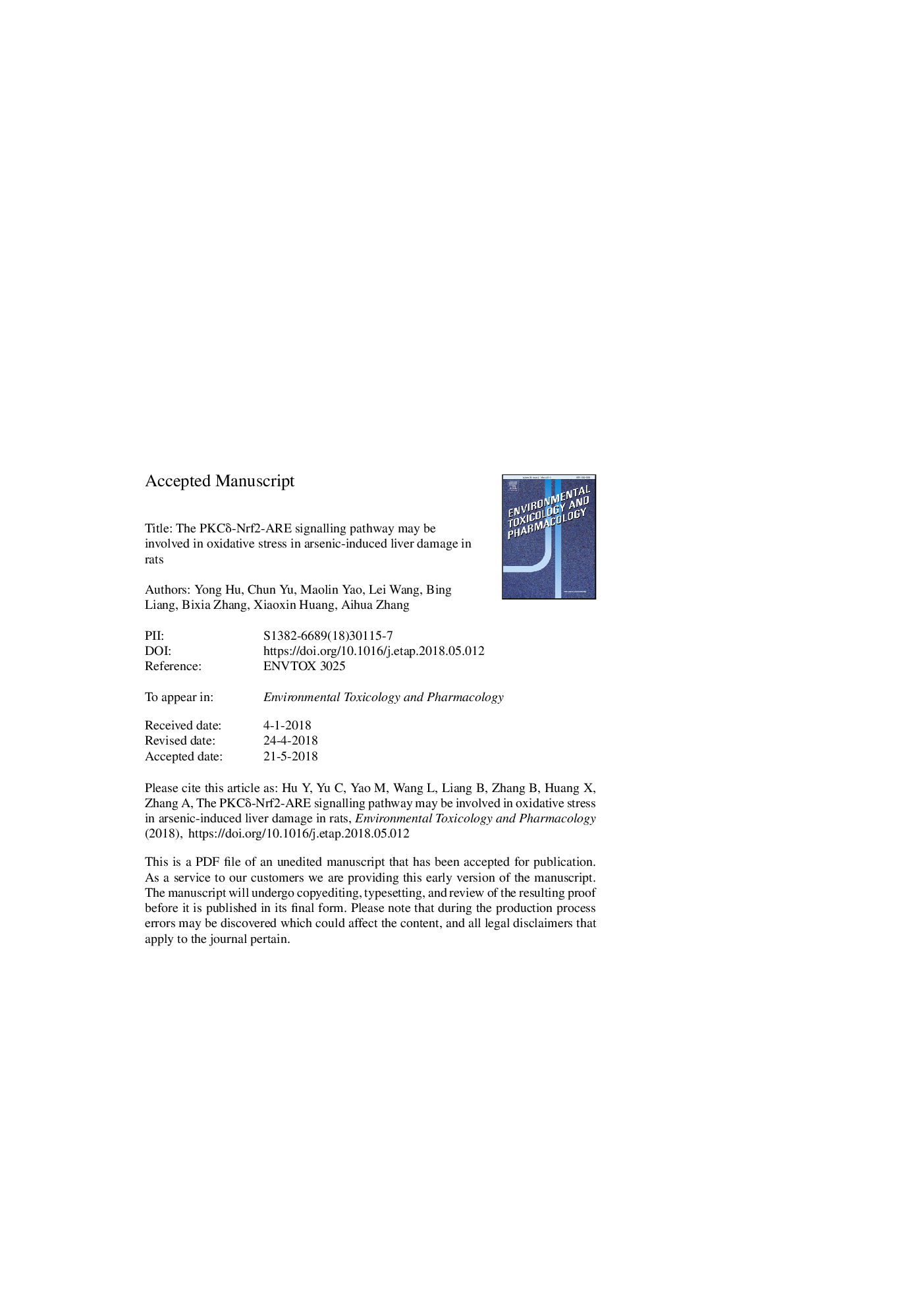| Article ID | Journal | Published Year | Pages | File Type |
|---|---|---|---|---|
| 8545723 | Environmental Toxicology and Pharmacology | 2018 | 16 Pages |
Abstract
Arsenic poisoning is a worldwide endemic disease that affects thousands of people. Growing evidence from animal, cell, and human studies indicates that arsenic has deleterious effects on the liver. Oxidative stress is considered the primary mechanism for arsenic toxicity in liver damage. However, the mechanisms remain unclear. In light of this fact, the main objective of this study was to investigate the effects of the protein kinase C delta-nuclear factor E2-related factor 2-antioxidant response element (PKCδ-Nrf2-ARE) signalling pathway on oxidative stress in liver damage. In the present study, we used a model of liver damage induced by coal-burning arsenic in rats, which was set up by our research group. The oxidative stress index and the transcription and protein expression levels of PKCδ, Nrf2, Keap1, SOD1, and GPx1 were detected, and then their correlation analyses were carried out. The results demonstrated that coal-burning arsenic can cause oxidative stress liver damage in rats, which may be related to the PKCδ-Nrf2-ARE signalling pathway. This study may provide a new pathway for studies of the mechanisms of arsenism.
Related Topics
Life Sciences
Environmental Science
Health, Toxicology and Mutagenesis
Authors
Yong Hu, Chun Yu, Maolin Yao, Lei Wang, Bing Liang, Bixia Zhang, Xiaoxin Huang, Aihua Zhang,
